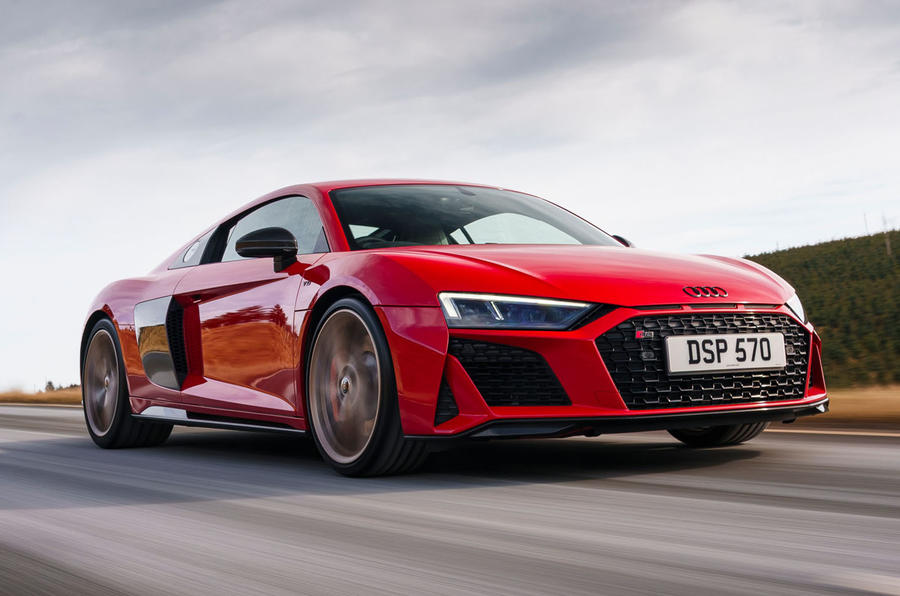What is it?
Cars like this, the Audi R8 V10 RWD, are starting to look time-limited. Sure, there are still nearly eight years before the law officially bans their sale, but Audi is already working on an all-electric version of its mid-engined supercar, and ther's a V8 hybrid solution on the way for the Lamborghini Huracán, the model that currently shares most of the Audi R8’s V10’s underparts.
Depending where you stand, this means that if you’re in the market for a £130,000 supercar, you have two starkly different ways to jump. You can proceed with purchase now, knowing you’ll be owning one of the most practical and best-developed full-performance piston sports cars there’s ever likely to be. Or you can keep your eyes ruthlessly on the future and wait for the first crop of super-performance EVs to land.
It’s an interesting choice. Wait, and you’ll get the very latest thing – very modern in design, less mechanically complicated and certain to be more 'sanitised' in the way it drives. Buy today and you’ll get long range and versatility with your traditional high performance.
Best of all, you’ll get a gently improved version of that much-praised Audi V10 engine – complete with its famed unearthly howl at full noise. In the RWD, it has 'only' 562bhp, which is 50bhp shy of its output in the all-wheel-drive Quattro Performance that survives alongside it in a reduced R8 range, with that extra power accounting for 0.6sec shaved from the 0-62mph acceleration time.

What's it like?
The RWD can both lay down a 3.7sec 0-62mph acceleration time and it can soar past 200mph flat out, a combination that forthcoming performance EVs won’t be able to deliver, especially if they hope to provide even a fraction of the 380-mile touring range available from the AWD’s 73-litre fuel tank.
True, the R8 styling is ageing (it always looked a bit too much like an Audi TT for some observers’ liking) but as well as all that performance, it offers supreme low-speed traffic ability, comfort and luggage space in generous proportions, and there’s a dealer in every decent-sized town. The price makes more sense than most, too: our test car’s £128,510 base price was augmented by just £1685 for paint and upgraded wheels. The steering has a fixed ratio, there are no adaptive dampers and the limited-slip diff is of a conventional mechanical type.
Perhaps it’s these last features that make the RWD Performance so easy to drive and understand in a world of increasing complexity. The steering is accurate and has a near-perfect heft to it (even if, occasionally, the front tyres feel rather lightly loaded in the wet). And the visibility and sensible dimensions make it seem more compact than many. The ride suits the pockmarked roads of the Cotswolds where we did our test miles, providing a firmish ride in Normal (the best choice of the four driving modes) yet smoothing jagged-edged potholes with aplomb and displaying impressive body rigidity and excellent damping by meeting bumps with one clean impact, and no aftershocks.
![]()













































Join the debate
Add your comment
You may say I'm wrong, but I can't think of a single EV that anyone cares about beyond being a technical 0 to 100 exercise.
Journalists can't hide their indifference and despondency. Manufacturers can't hide their fear.
A top speed of 104mph is probably plenty. Especially as you'd get there in no time at all.
A Porsche Taycan at half the price is just as appealing in my book. But then neither are in my price range so you could say both of them aren't appealing in the real sense